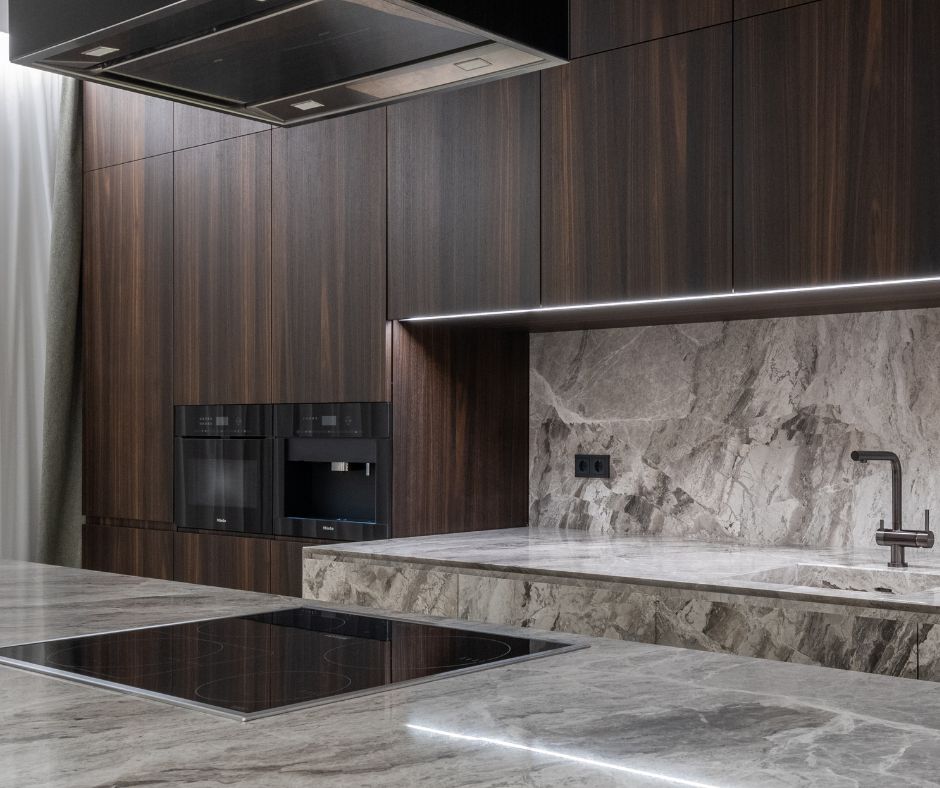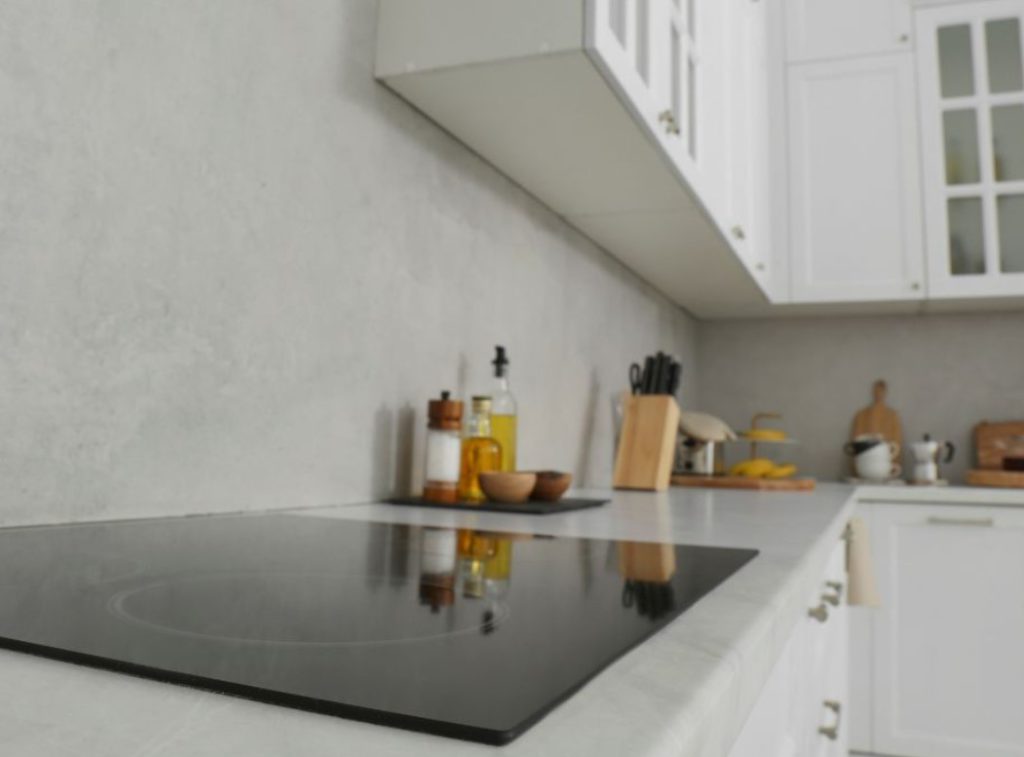Cool kitchens spark new traditions. Although induction technology might feel like a cutting-edge invention, it actually first appeared in the early 20th century.
Early demonstrations in the 1930s wowed audiences with magnetic magic that boiled water without visible heat.
However, it wasn’t until recent decades—driven by improvements in technology, efficiency, and design—that induction cooktops truly found their place in modern homes.
Today, more home chefs and food lovers are embracing induction cooking for its combination of sleek design, remarkable precision, and unparalleled energy efficiency.
It offers more than just faster meals; it’s reshaping the very art of home cooking, blending science and soul into every dish prepared on its cool, gleaming surface. The right cooktop can also compete with the speed of using a microwave to produce family meals!
Precision That Protects Flavour and Nutrition
Unlike traditional gas or electric ranges, induction cooktops heat cookware directly through electromagnetic energy. This means no wasted heat, no burnt edges, and better control over low and high temperatures.
When you can regulate heat this precisely, your ingredients retain more natural moisture, flavour, and nutritional value.
Flash-searing proteins, gently simmering sauces, or quick-blanching vegetables—all become effortless without overcooking and nutrient loss.
Sleek Design That Saves Space (and Stress)
In a kitchen where every square centimetre counts, induction cooktops shine beyond just cooking performance.
Their flat, smooth surface blends seamlessly into your benchtop, offering a minimalist look that frees up space for prep work, plating, or even casual dining.
Unlike traditional gas hobs, with their bulky grates and protruding burners, induction cooktops sit nearly flush with the counter. Ceramic stoves might offer a smoother appearance, but they tend to stay dangerously hot long after you’ve finished cooking.
Induction surfaces, by contrast, cool down rapidly once the pan is removed.
Because the heat comes from the magnetic reaction between the cooktop and the cookware—not the cooktop itself—the glass doesn't retain nearly as much residual heat.
This makes it safer to clean, safer to work around, and safer for homes with kids or pets curious about kitchen counters.
The result?
A cooler kitchen, cleaner lines, and more flexible space—perfect for modern cooks who want both form and function.

What You’ll Need: Choosing the Right Cookware
Transitioning to induction cooking might come with a bittersweet moment—you may need to say goodbye to some beloved old pans. Because induction relies on magnetic energy to generate heat, not every pot or skillet will make the cut.
To work on an induction cooktop, your cookware must contain ferrous (magnetic) metals like cast iron, carbon steel, or magnetic-grade stainless steel.
An easy fridge magnet test will tell you: place a magnet on the bottom of the pan. If it sticks firmly, you’re good to go.
When choosing new pieces, look for pans with a heavy, flat base.
This ensures full contact with the cooktop, delivering even heat distribution that’s crucial for perfect browning, tender roasts, and crisped edges.
High-quality induction cookware also resists warping over time, preserving consistent cooking performance meal after meal.
While it may feel hard to part with old favourites, think of it as an upgrade. In return, you gain greater control, faster results, and dishes with even richer flavours and textures.
Quick Cookware Checklist for Induction:
✅ Use a fridge magnet test—strong stick means induction-ready
✅ Prefer flat-bottom pans for best contact and heat spread
✅ Choose cast iron, carbon steel, or magnetic stainless steel cookware
✅ Avoid cookware made solely from copper, aluminium, or glass unless clearly marked for induction
✅ Look for the induction symbol (it looks like a horizontal coil or a series of looped wires) stamped on the base or box
Tip: The induction symbol often looks like a little zigzag or spring coil graphic. Seeing it guarantees compatibility.
Installation Essentials You Can't Ignore
Before you start crafting masterpieces on your new cooktop, a few setup essentials deserve your attention:
-
Professional Installation Is Non-Negotiable: Induction units often demand dedicated circuits and specific clearances. Make sure to work with professionals who understand the requirements.
-
Use a Licensed Electrician: Wiring a high-powered induction cooktop is no DIY project.
Here’s why a qualified electrician is crucial. -
Confirm Your Power Setup: Some models draw considerable power. Before purchase, check your wiring matches the cooktop’s requirements.
Proper installation ensures not just performance, but also longevity and safety.
The Takeaway
Induction cooking isn’t just faster or safer—it’s smarter. With the right cookware and a properly installed system, you unlock better tasting dishes, richer textures, and healthier meals, night after night.
In today’s kitchen, precision isn’t a luxury—it’s the new standard.
Frequently Asked Questions
1. What makes induction cooktops better than gas or electric?
Induction cooktops deliver instant heat control, greater energy efficiency, and improved safety. Because they heat cookware directly, food cooks faster, with less energy loss, and surfaces stay cooler, reducing burn risks.
2. Can I use my existing pots and pans on an induction cooktop?
Only if they are magnetic. Cookware made from cast iron or magnetic stainless steel works perfectly. You can quickly check compatibility by placing a magnet at the base—if it sticks firmly, it’s induction-ready.
3. Does induction cooking change the taste of food?
Absolutely—in a good way. Because induction allows precise temperature control, you can sear, sauté, or simmer without overheating, preserving natural flavour, texture, and nutrients far better than with fluctuating gas or electric heat.
4. Do I need special wiring for an induction cooktop?
Most induction cooktops require a dedicated electrical circuit and specific voltage/amperage setups. It’s vital to have a professional electrician install and verify your wiring to meet safety standards and ensure full performance.


It’s fascinating how induction cooking has evolved from those early 20th-century demonstrations into a staple in many modern kitchens today. I remember my grandmother’s old gas stove, where you could feel the heat enveloping the whole kitchen—sometimes a bit too much! Induction cooktops really change that experience; they make cooking feel more like a precise science rather than a guessing game.
It’s interesting to think about how cooking experiences have shifted over the decades. Your memory of your grandmother’s gas stove really captures that old-school charm, doesn’t it? There’s something undeniably comforting about the warmth that fills the kitchen, though I can see how it might become overwhelming, especially in summer months.
It truly is fascinating how cooking experiences have evolved over time. Your mention of that warmth filling the kitchen takes me back to my own memories of family gatherings around my mother’s old electric stove. There’s something unique about that blend of aromas and the sound of sizzling that just wraps you in nostalgia.
Speaking of comforting kitchen experiences, I recently came across some universal plating techniques that can elevate home cooking to a whole new level, reminiscent of those cherished family meals.
‘Secrets to a Michelin-Worthy Plating: Universal Techniques’
https://cookinggods.com/secrets-to-a-michelin-worthy-plating-universal-techniques/.
You’ve touched on a key aspect of cooking that often gets overlooked—the emotional connection tied to the kitchen environment. Your memories of your grandmother’s gas stove reflect how cooking appliances shape our experiences. Induction cooktops really do revolutionize that process by providing not only precision but also increased energy efficiency—no more lingering heat filling the room after a meal.
I love how you highlighted the blend of technology and tradition in cooking! Induction cooking is such a fascinating topic, especially considering its long history. It’s intriguing to think about how a technology that seemed futuristic back in the day has now become accessible and a staple in modern kitchens. My own experience with induction cooktops has been a game changer. The precision definitely helps me maintain the flavors in my dishes, especially when I’m preparing delicate sauces or dishes that require specific temperatures.